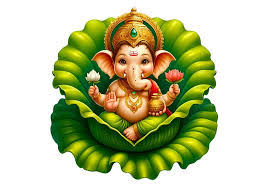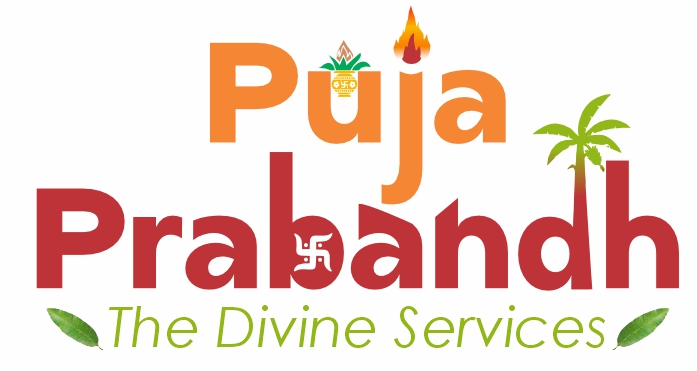Shivaratri Puja
Shivaratri Pooja, especially Maha Shivaratri, is one of the most sacred Hindu observances dedicated to Lord Shiva, celebrated annually on the 14th night of the waning moon (Chaturdashi) in the month of Phalguna or Maagha (February–March). Devotees observe day-long fasting, night-long vigil (jaagaran), and ritualistic worship of Lord Shiva, symbolizing the conquest of darkness and ignorance.
🕉️ Spiritual Significance of Shivaratri
Commemorates the divine marriage of Lord Shiva and Parvati.
Represents the cosmic dance (Tandava) performed by Shiva.
An ideal time to seek forgiveness, practice detachment, and meditate.
Believed to destroy past karma and lead toward moksha (liberation).
🛕 Shivaratri Puja Items List
Shiva Lingam (or photo)- Main object of worship
Abhisheka items- Milk, water, honey, curd, ghee, sugar, and rose water (Panchamrita)
Bilva (Bel) leaves- Very sacred to Lord Shiva
Dhatura flowers/fruit- Special offering to Shiva
Sandalwood paste- For applying to the Shiva Lingam
Vibhuti (sacred ash)- For applying on forehead
Fruits, Coconut Naivedyam/offering
Incense sticks, Camphor, Oil lamp- For aarti
Rice (Akshata), Red/White flowers – For offering
Betel leaves and nuts- Traditional offering
Ganesha or Vinayaka Pooja (Vinayagar Chaturthi)

🌟 Ganesha Chaturthi Pooja – Celebrating the Birth of Lord Ganesha
Ganesha Chaturthi, also known as Vinayaka Chaturthi, is a grand festival celebrated with great enthusiasm across India and around the world, marking the birth of Lord Ganesha, the remover of obstacles and the god of wisdom, prosperity, and new beginnings. This festival falls on the 4th day (Chaturthi) of the waxing moon in the month of Bhadrapada (usually August or September), and is observed with deep devotion and joy.
🐘 Significance of Ganesha Chaturthi
Birth of Lord Ganesha: Lord Ganesha was created by Goddess Parvati from sandalwood paste, and He is known to remove obstacles (Vighnaharta) and grant blessings of wisdom and prosperity.
New Beginnings: Ganesha is worshipped at the beginning of any new venture, journey, or ritual. It’s believed that invoking Lord Ganesha during this time brings success and removes obstacles from the path.
Cultural and Spiritual Importance: The festival unites communities in celebration, prayer, and devotion, with poojas held in homes and public spaces. The rituals and offerings ensure a connection with divine blessings for a prosperous and harmonious life.
📜 Rituals of Ganesha Chaturthi Pooja
Installation of Ganesha Idol (Pratishtha): The day begins with the installation of Ganesha idols (often in homes or public places) that are decorated with flowers and traditional items. Devotees bring home clay idols of Ganesha and prepare for the rituals.
Puja Offerings: The Ganesha idol is bathed with milk, honey, water, and sandalwood paste, symbolizing purification and auspiciousness. Modaks, Ganesha’s favorite sweet, are prepared and offered along with fruits, flowers, and incense.
Chanting and Prayers: Devotees chant sacred mantras like Om Gan Ganapataye Namah and Ganesha Ashtakshara Mantra to invoke divine blessings. The Ganapati Stotra and Suktas are recited, along with Bhajans and Kirtans.
Aarti and Prasadam Distribution: After the prayers, aarti (a ritual of waving lighted lamps) is performed, and prasadam (sacred offerings) is distributed to the family members and guests.
Visarjan (Immersion): The festival culminates with the visarjan, or immersion of the Ganesha idol in water, symbolizing the departure of Ganesha and the belief that He will return next year. This act signifies the cycle of life and the impermanence of material existence.
🌸 Benefits of Ganesha Chaturthi Pooja
Removal of Obstacles: Lord Ganesha is known for removing obstacles and difficulties from the life of the devotee. Performing the pooja ensures that no hindrances block your path.
Prosperity and Success: Worshipping Lord Ganesha brings wealth, success, and growth in your professional and personal life.
Wisdom and Knowledge: Ganesha is also the god of knowledge and learning. Performing Ganesha Pooja helps to increase wisdom, intellect, and clarity of thought.
Family Harmony: The pooja is said to bless families with peace, prosperity, and harmony, ensuring the overall well-being of loved ones.
🧘♂️ Ideal For
Families wishing for prosperity, good health, and happiness in their lives.
Students and professionals seeking wisdom, success, and smooth progress in their education or career.
New ventures and businesses looking to begin with divine blessings and avoid obstacles.
Devotees of Lord Ganesha who wish to deepen their connection with Him and seek His blessings.
Sri krishna puja ( Gokulashtami )
Krishna Puja is a sacred Hindu ritual performed to honor Lord Krishna, one of the most beloved and revered deities in Hinduism. Krishna is considered the eighth incarnation of Lord Vishnu, and is worshiped as the god of love, compassion, and divine wisdom. His life and teachings, especially his dialogue with Arjuna in the Bhagavad Gita, are a source of inspiration for millions.
🕉️ Significance of Krishna Puja
Love and Devotion: Krishna is known for his divine love and compassion. Worshiping him helps devotees develop love for humanity and for the divine.
Spiritual Wisdom: Through Krishna’s teachings, devotees seek wisdom and guidance to navigate life’s challenges.
Protection: Krishna is also seen as a protector, and his worship is believed to bring safety and good fortune to his devotees.
Liberation (Moksha): Krishna’s devotees believe that worshipping him with devotion leads to liberation from the cycle of birth and death.
🛕 Krishna Puja Items List
Krishna Idol or Photo- The central object of worship. It could be a statue or photo of Lord Krishna.
Kalasha A water-filled vessel with mango leaves and a coconut on top (symbolizing auspiciousness).
Flowers – White or yellow flowers (like jasmine, lotus) to offer to Krishna.
Incense Sticks- Used for purifying the space and invoking divine energy.
Oil Lamp (Deepam)- To light during the puja and perform the aarti.
Rice (Akshata)- For offerings during the puja.
Turmeric and Kumkum- Used for tilak and offerings.
Naivedyam (Food Offerings)- Fruits, sweets (like laddu, peda), milk, and butter (symbolizing Krishna’s love for butter) as offerings to Krishna.
Milk, Curd, Honey, Ghee- Used for the Abhishekam (ritual bath) of the idol.
Panchamrita- A mixture of milk, honey, ghee, curd, and sugar used for Abhishekam.
Camphor- For the final aarti and purification of the space.
Deepavali LAKSHMI PUJA
Deepavali Lakshmi Puja is one of the most important rituals performed on the main night of Diwali, especially in South India and North India alike. It is dedicated to Goddess Lakshmi, the deity of wealth, prosperity, and fortune. The puja is performed to invite her blessings into the home and to dispel poverty and negativity.
🕯️ Deepavali Lakshmi Pooja: Overview
Date: Typically on Amavasya (new moon) day of the Karthika month (October–November)
Main Deity: Maha Lakshmi Devi
Other deities worshiped: Lord Ganesha (first), sometimes Kubera (god of wealth)
🛕 Lakshmi Pooja Items List
Lakshmi and Ganesha idols or photos
Turmeric (Pasupu) & Kumkum
Sandalwood paste (Gandham)
Akshata (turmeric rice)
Betel leaves, betel nuts
Flowers and garlands
Incense sticks, camphor
Oil or ghee lamps
Fruits and coconuts
Naivedyam (payasam, sweets like laddu, and rice items)
Puffed rice (borugulu), jaggery
Coins or currency notes (to symbolize wealth)
Kalasham (filled with water, mango leaves, and coconut on top)
New cloth (saree or blouse piece) for offering to Goddess
Sankashti Chaturthi Ganesha Pooja
Sankashti Chaturthi Ganesha Pooja is a highly auspicious monthly ritual dedicated to Lord Ganesha, observed on the Chaturthi tithi (4th day) of Krishna Paksha (waning moon). It is believed that performing this vrat and pooja removes all obstacles (sankat) and grants prosperity, wisdom, and health.
If this Chaturthi falls on a Tuesday, it is celebrated as Angaraki Sankashti Chaturthi, which holds even greater spiritual merit.
🕉️ Significance of Sankashti Chaturthi
“Sankashti” means liberation from problems, and “Chaturthi” is Ganesha’s sacred day.
Devotees fast and worship Lord Ganesha to remove obstacles, gain intellectual clarity, and receive blessings of success.
It’s especially powerful for fulfilling wishes, overcoming debts, and for childbirth blessings
🛕 Pooja Items List for Sankashti Chaturthi
Lord Ganesha idol or photo
Durva grass (at least 21 blades)
Modak or Ladoo (Ganesha’s favorite sweet)
Red flowers (Hibiscus or Marigold preferred)
Incense sticks (Agarbatti)
Camphor (Karpooram)
Oil lamp (Deepam)
Cotton wicks and oil/ghee (for lighting the lamp)
Sandalwood paste (Chandan)
Kumkum (Vermilion)
Turmeric powder
Fruits (Bananas, apples, or seasonal fruits)
Coconut
Rice (Akshata) – raw rice mixed with turmeric
Betel leaves and betel nuts (Tamala paaku and Vakkalu)
Panchamrit (mixture of milk, curd, honey, sugar, and ghee – optional for abhishekam)
Holy water or plain water
Small Kalash or pot (optional – for Kalasha sthapana)
Plate for offerings (Naivedyam plate)
Aarti plate with bell and diya
Sri Rama Pooja ( Rama Navami )
Sri Rama Puja is a sacred worship dedicated to Lord Rama, one of the most revered deities in Hinduism, known for his righteousness, virtues, and ideal conduct. The puja is performed to seek the blessings of Lord Rama for peace, prosperity, and the removal of obstacles, as well as to strengthen one’s resolve to follow the path of dharma (righteousness).
🕉️ Significance of Sri Rama Puja
Lord Rama is considered the ideal man and the perfect incarnation of dharma.
The puja is performed to invoke Lord Rama’s blessings for happiness, peace, protection from adversities, and spiritual growth.
It is commonly observed on Rama Navami (Lord Rama’s birthday), Chaitra Masa, and Dasharatha Jayanti, but can be performed at any time of the year, especially on Saturdays and Pradosham days.
🛕 Sri Rama Puja Items List
Lord Rama’s Idol or Picture – Preferably a deity idol or a photo of Lord Rama, Sita, Lakshmana, and Hanuman.
Kalasham – Filled with water, mango leaves, and a coconut on top.
Turmeric (Pasupu), Kumkum, and Sandwich paste (Gandham).
Akshata – Rice mixed with turmeric.
Betel Leaves and Betel Nuts (Paku and Vakkalu).
Flowers (preferably marigold or jasmine).
Incense sticks or dhoop.
Oil lamp (deepam) for lighting.
Naivedyam (offerings) – Fruits, sweets (like laddu, peda, or prasadam), and coconut.
Puffed Rice (Borugulu) and Jaggery.
Holy water for sprinkling.
New cloth (optional, for offering to the deity).
Hanuman Jayanthi Pooja
Hanuman Jayanti Puja is a special and highly auspicious celebration dedicated to Lord Hanuman, observed primarily on the full moon day (Purnima) of the Chaitra month (March-April) according to the Hindu calendar. It marks the birth of Lord Hanuman, the son of Anjana and Vayu (the wind god). Hanuman Jayanti is widely celebrated by devotees to honor Lord Hanuman’s qualities of devotion, strength, courage, and selflessness.
🕉️ Significance of Hanuman Jayanti
Celebrates the birth of Lord Hanuman.
Symbol of devotion: Hanuman’s unwavering devotion to Lord Rama is an inspiration for all devotees.
Removes obstacles: Worshiping Hanuman on this day is believed to help remove obstacles in one’s life and to gain strength, wisdom, and protection.
Protection from evil: It is believed that worshiping Lord Hanuman protects the devotee from diseases, enemies, and negative energies.
🛕 Hanuman Jayanti Puja Items List
Lord Hanuman’s idol/photo Idol or image of Lord Hanuman.
Kalasha Water-filled vessel with mango leaves and coconut (for auspiciousness).
Turmeric (Pasupu) For offering during the ritual.
Kumkum For tilak and offering.
Flowers- Marigold or jasmine flowers for offering.
Betel Leaves and Betel Nuts For offerings to the deity.
Incense sticks For purification and invoking divine energy.
Oil Lamp (Deepam) To light during the aarti and puja.
Fruits- Banana, coconut, and other fresh fruits.
Sweets- Laddu, peda, or any sweet to offer as naivedyam.
Holy water For sprinkling around the idol during the puja.
Rice and Akshata- Turmeric rice for offering.
Puffed Rice and Jaggery- These are traditional offerings for Lord Hanuman.

